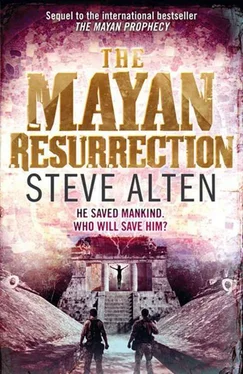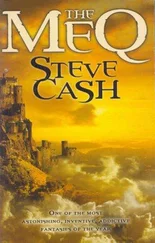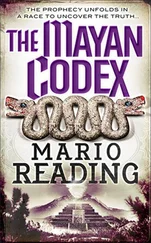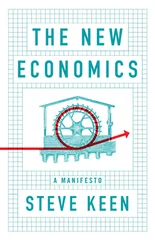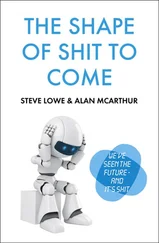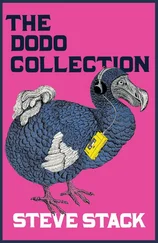Steve Alten - The Mayan Resurrection
Здесь есть возможность читать онлайн «Steve Alten - The Mayan Resurrection» весь текст электронной книги совершенно бесплатно (целиком полную версию без сокращений). В некоторых случаях можно слушать аудио, скачать через торрент в формате fb2 и присутствует краткое содержание. Жанр: Триллер, на английском языке. Описание произведения, (предисловие) а так же отзывы посетителей доступны на портале библиотеки ЛибКат.
- Название:The Mayan Resurrection
- Автор:
- Жанр:
- Год:неизвестен
- ISBN:нет данных
- Рейтинг книги:3 / 5. Голосов: 1
-
Избранное:Добавить в избранное
- Отзывы:
-
Ваша оценка:
- 60
- 1
- 2
- 3
- 4
- 5
The Mayan Resurrection: краткое содержание, описание и аннотация
Предлагаем к чтению аннотацию, описание, краткое содержание или предисловие (зависит от того, что написал сам автор книги «The Mayan Resurrection»). Если вы не нашли необходимую информацию о книге — напишите в комментариях, мы постараемся отыскать её.
The Mayan Resurrection — читать онлайн бесплатно полную книгу (весь текст) целиком
Ниже представлен текст книги, разбитый по страницам. Система сохранения места последней прочитанной страницы, позволяет с удобством читать онлайн бесплатно книгу «The Mayan Resurrection», без необходимости каждый раз заново искать на чём Вы остановились. Поставьте закладку, и сможете в любой момент перейти на страницу, на которой закончили чтение.
Интервал:
Закладка:
Merrily, merrily, merrily, merrily… life is but a dream.
Was Bill Raby’s existence but a dream?
Was Michael Gabriel’s? Can one truly exist without love?
Yes, but it is a self-imposed hell.
It was your love that saved me, Jacob, but in your unselfish quest to release me, I fear you have condemned your soul to the same purgatory, the same ultimate destiny.
You cannot simply be Hunahpu, you must retain your humanity. Step into the real light. Allow yourself to love again, or you will find yourself on the same path as your cousin, Lilith.
Having said what I needed to say, I’ll return to my journey on Xibalba.
Each of the alien planet’s days was divided into three shifts consisting of labor for the collective, personal time, and more labor, for it was essential to our existence that our first crop yield a bountiful harvest.
During these first six months, I was assigned to a habitat shared by seventy-eight single men and women.
It was there that I met Jude.
Judith Fields was a fellow genetics expert whose specialty was in agriculture. Using the surviving portions of our gene bank, she and her colleagues had begun the process of cloning livestock for New Eden’s farms.
Jude was a country girl, originally from Idaho, with long brown hair, hazel eyes, and a great sense of humor. It was Jude who made me feel again, and over the months, our puppy love blossomed into a strong bond. I found myself, or was it Bill, thinking about her constantly. Whoever it was, our time together was one of great happiness that, at least for the moment, sweetened both our souls.
Jude introduced me to Tan Rashid, an astronomer, originally from England, who entertained us with his ‘theories’ regarding the location of our new home world. You see, despite his computers and star charts, despite his infinite knowledge of the heavens, Tan simply could not discern the location of our planet. Was the distant red supergiant Betelgeuse? If so, none of the other constellations were familiar. Seeking answers, he and his fellow astronomers set to work on building Xibalba ’s first telescope.
As for me, my alter ego-Bill Raby-was a marine geneticist. Since there was little we could do to contribute on an alien planet devoid of oceans, we were assigned to the geology department.
Drone scouts gave us the ability to map New Eden’s entire domed landscape, which spanned nearly 3 million square miles, making it roughly the equivalent of Australia. Engineers determined our floating continent had been built in sections over eons. With its temperate climate control systems and agricultural pods, which we still could not access, they estimated New Eden could house and feed more than 2 billion human beings.
Located twenty feet below the habitat’s rich layer of soil was an inaccessible subterranean chamber, its alien carbon fiber plating composed of the same composite materials used in the dwellings. Within this sealed level, we theorized, had to be the environmental systems that perpetually purified the cloud city’s air and water, fertilized the plant life, and controlled the dome’s shielding mechanism.
The first crop was a bountiful success, and the future of our colony and our species seemed secure.
Two weeks later, the plague struck.
The human body is an amazing and complex machine. There are over a hundred thousand different genes in the human genome, and one single gene may contain more than 2 million nucleotides. Our bony framework consists of 206 bones, most of which are in our hands and feet. Our heart and lungs are the power trains behind a circulatory system that supplies muscles and organs with blood, oxygen, and nutrients, all the while removing carbon dioxide and other waste products. Our nervous system and hormones control bodily functions. Our digestive and reproductive systems are marvels of engineering, our brains more complicated than any computer. In fact, the human body is akin to a combustion engine, producing the same amount of energy as a hundred-watt lightbulb.
Yet, for all its nanoscale complexity and metabolic sophistication, the human body is still composed of 70 percent water.
For eighteen months our colony had been consuming New Eden’s water. We were cooking with it, bathing in it, and consuming food supplies grown with it.
What we didn’t know was that it was affecting us… changing us, altering our genetic code.
As Bill Raby, I was among the plague’s first victims.
I remember it being an overcast day. Olive-gray storm clouds whipped above New Eden’s protective domes. Jude and I were on personal time, strolling along one of the artificial lakes, admiring the handiwork of our alien benefactors, when I was suddenly stricken with intense head pains, as if my brain was on fire. I crumpled in agony, screaming to Jude for help.
Mercifully, I blacked out.
I awoke three days later in a medical ward, quarantined with others like me.
The human brain floats in a self-contained sort of womb, surrounded by and filled with a watery substance called cerebrospinal fluid. Doctors informed me that pressure in this cavity had increased dangerously, causing a portion of my cerebrum actually to press against the inside of my skull. This alien form of hydrocephalus had stricken fifty-seven New Edeners besides me, and more cases were being reported every day.
Drugs were not working, and the pressure on my brain was increasing by the hour. Unless relieved, I would lose consciousness and die within three days.
In effect, it was a death sentence.
How does one take such a pronouncement? Jude fell apart. Bill Raby’s consciousness wept inside, while I… well, I just got angry. ‘Remove the tumor,’ I demanded.
‘It’s not a tumor,’ the resident surgeon said. ‘Your brain is swelling. Intracranial pressure has risen from 210 mm to 270, and it’s still climbing. There simply isn’t enough room in your skull to allow for any more growth.’
Within hours, I slipped into a coma.
The Homo sapiens brain is an incredibly unique organ, its electrochemical design quite different from the rest of the body. It is shielded from direct contact with blood, and contains a hundred billion working cells called neurons, which make over a thousand trillion connections. The organ may be the most complex computer in the universe, yet, despite all our God-given intelligence, our species was still only capable of using roughly 10 percent of its brain, lacking the genetic programming to do otherwise.
The human brain also consists of several unique layers that reflect the gradual progression of our evolution. Rather than discard the antiquated layers, nature had simply built upon them, preserving our evolutionary history-and perhaps our tendency toward violence.
The oldest and deepest of these layers, dubbed the ‘neural chassis,’ consists of the midbrain, brain stem (medulla and pons) and the spinal cord, and controls our basic life functions, such as our heart beat, blood circulation, and respiration. Surrounding this layer is the R-complex, nicknamed the ‘reptilian brain,’ as it controls our aggressive behavior, social hierarchy, and territoriality. It consists of our globus pallidus, corpus striatum, and olfactostriatum.
Surrounding the R-complex is the limbic system, a layer developed during our evolution as mammals. Comprising the thalamus, hypothalamus, amygdala, pituitary, and hippocampus, it controls social behavior, emotions, and complex relations required for living in cohesive groups.
The outermost layer of the brain is a tablecloth-sized sheet folded like a parachute. It controls reason, spatial perception, and language. Known as the neocortex, it is divided by anatomists into the frontal, parietal, temporal, and occipital lobes. While the outer layers of other animal brains are smooth, ours is grooved, increasing the surface area of the cerebral cortex.
Читать дальшеИнтервал:
Закладка:
Похожие книги на «The Mayan Resurrection»
Представляем Вашему вниманию похожие книги на «The Mayan Resurrection» списком для выбора. Мы отобрали схожую по названию и смыслу литературу в надежде предоставить читателям больше вариантов отыскать новые, интересные, ещё непрочитанные произведения.
Обсуждение, отзывы о книге «The Mayan Resurrection» и просто собственные мнения читателей. Оставьте ваши комментарии, напишите, что Вы думаете о произведении, его смысле или главных героях. Укажите что конкретно понравилось, а что нет, и почему Вы так считаете.
